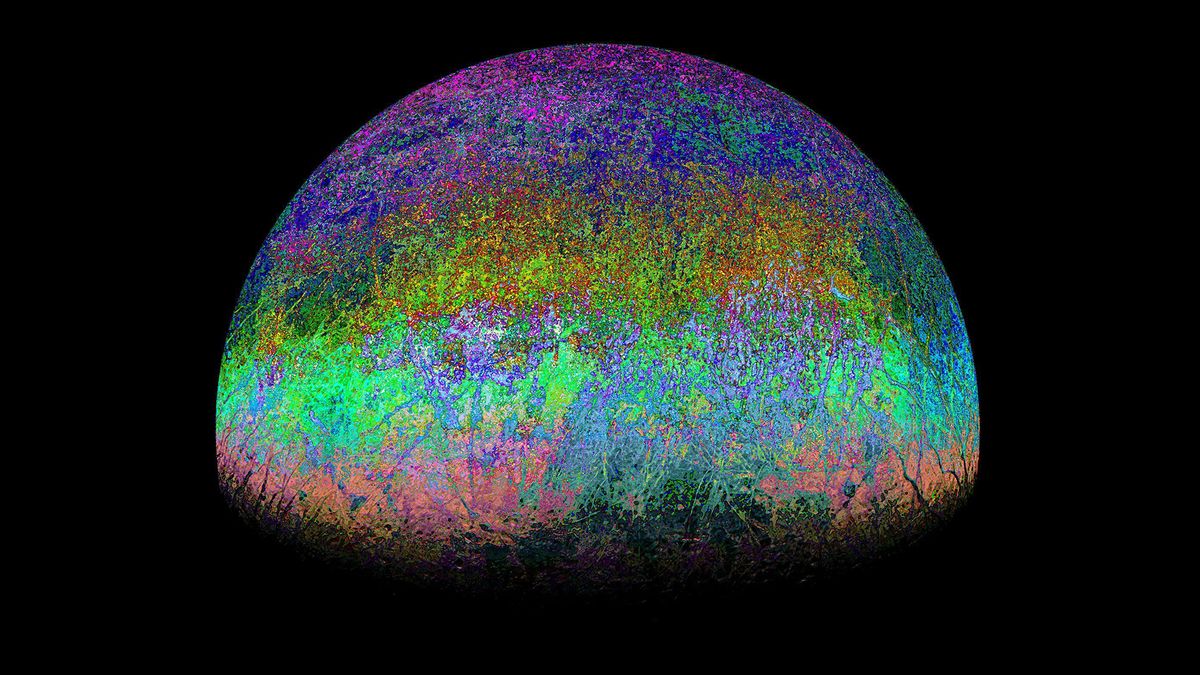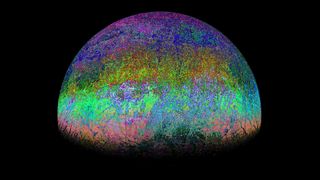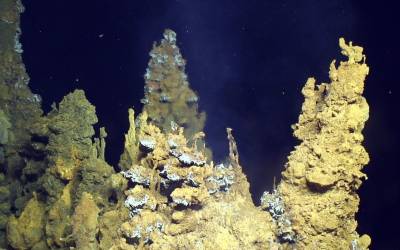Hamartia Antidote
ELITE MEMBER

- Joined
- Nov 17, 2013
- Messages
- 35,188
- Reaction score
- 30
- Country
- Location
James Webb spots Dave Bowman on Europa.


 www.livescience.com
www.livescience.com
The discovery of seemingly home-grown carbon dioxide suggests Europa's ice-covered ocean could be habitable.

A false-color image of Jupiter’s moon Europa taken by NASA’s JunoCam in Sept. 2022. (Image credit: NASA/JPL-Caltech/SwRI/MSSS Image processing by Kevin M. Gill / Fernando Garcia Navarro CC BY 2.0)
NASA's James Webb Space Telescope (JWST) has revealed homemade carbon dioxide on Jupiter's icy moon Europa, raising the possibility that the frigid waterworld could host life.
Europa, which is a little bit smaller than Earth's moon, is covered with a crust of water ice enveloping a saltwater ocean. The presence of liquid water makes Europa an intriguing object of exploration for scientists interested in extraterrestrial life. But until now, no one had shown that the ocean contained the proper molecules, particularly carbon, which is a fundamental building block of life on Earth.
The new detection by JWST is intriguing because the carbon dioxide does not seem to have been carried by a meteorite or asteroid, and it appears in a geologically young region of the moon called Tara Regio, suggesting the gas may have formed within the moon itself.
"Previous observations from the Hubble Space Telescope show evidence for ocean-derived salt in Tara Regio," Cornell University planetary scientist Samantha Trumbo said in a statement. "Now we’re seeing that carbon dioxide is heavily concentrated there as well. We think this implies that the carbon probably has its ultimate origin in the internal ocean."
Trumbo is the lead author of one of two papers on the new Europa observations published in the journal Science on Sept. 21. Thanks to JWST’s power, researchers needed only minutes of the observatory's time to discern new details about Europa, Heidi Hammel of the Association of Universities for Research in Astronomy said in the statement.
The researchers found signs of both crystalline and amorphous carbon dioxide on Europa. ("Amorphous" refers to a disorganized molecular form, as compared with the rigid patterns of crystals.) They saw high concentrations in what astronomers call "chaos regions," where the surface crust has been disrupted and there is likely movement of materials between the crust and interior ocean. Because carbon dioxide doesn't stay stable for long on Europa's surface, the researchers believe that the carbon came up from the ocean relatively recently. Europa's surface is, on average, around 60 million years old, as estimated by the few craters pockmarking the ice, according to 2022 research. The chaos terrain is generally younger than average.
Scientists are planning two missions to Europa in the upcoming years. NASA's Clipper mission, expected to launch in 2024, will provide observations of the moon from orbit, with a focus on searching for molecules and conditions conducive to life. Meanwhile, the European Space Agency launched the Jupiter Icy Moons Explorer (JUICE) spacecraft in April; it will arrive at the gas giant in 2031. That craft will conduct 35 flybys of the three moons Europa, Ganymede, and Callisto.

James Webb telescope finds potential signature of life on Jupiter's icy moon Europa
The discovery of seemingly home-grown carbon dioxide suggests Europa's ice-covered ocean could be habitable.
The discovery of seemingly home-grown carbon dioxide suggests Europa's ice-covered ocean could be habitable.

A false-color image of Jupiter’s moon Europa taken by NASA’s JunoCam in Sept. 2022. (Image credit: NASA/JPL-Caltech/SwRI/MSSS Image processing by Kevin M. Gill / Fernando Garcia Navarro CC BY 2.0)
NASA's James Webb Space Telescope (JWST) has revealed homemade carbon dioxide on Jupiter's icy moon Europa, raising the possibility that the frigid waterworld could host life.
Europa, which is a little bit smaller than Earth's moon, is covered with a crust of water ice enveloping a saltwater ocean. The presence of liquid water makes Europa an intriguing object of exploration for scientists interested in extraterrestrial life. But until now, no one had shown that the ocean contained the proper molecules, particularly carbon, which is a fundamental building block of life on Earth.
The new detection by JWST is intriguing because the carbon dioxide does not seem to have been carried by a meteorite or asteroid, and it appears in a geologically young region of the moon called Tara Regio, suggesting the gas may have formed within the moon itself.
"Previous observations from the Hubble Space Telescope show evidence for ocean-derived salt in Tara Regio," Cornell University planetary scientist Samantha Trumbo said in a statement. "Now we’re seeing that carbon dioxide is heavily concentrated there as well. We think this implies that the carbon probably has its ultimate origin in the internal ocean."
Trumbo is the lead author of one of two papers on the new Europa observations published in the journal Science on Sept. 21. Thanks to JWST’s power, researchers needed only minutes of the observatory's time to discern new details about Europa, Heidi Hammel of the Association of Universities for Research in Astronomy said in the statement.
The researchers found signs of both crystalline and amorphous carbon dioxide on Europa. ("Amorphous" refers to a disorganized molecular form, as compared with the rigid patterns of crystals.) They saw high concentrations in what astronomers call "chaos regions," where the surface crust has been disrupted and there is likely movement of materials between the crust and interior ocean. Because carbon dioxide doesn't stay stable for long on Europa's surface, the researchers believe that the carbon came up from the ocean relatively recently. Europa's surface is, on average, around 60 million years old, as estimated by the few craters pockmarking the ice, according to 2022 research. The chaos terrain is generally younger than average.
Scientists are planning two missions to Europa in the upcoming years. NASA's Clipper mission, expected to launch in 2024, will provide observations of the moon from orbit, with a focus on searching for molecules and conditions conducive to life. Meanwhile, the European Space Agency launched the Jupiter Icy Moons Explorer (JUICE) spacecraft in April; it will arrive at the gas giant in 2031. That craft will conduct 35 flybys of the three moons Europa, Ganymede, and Callisto.
Last edited:





